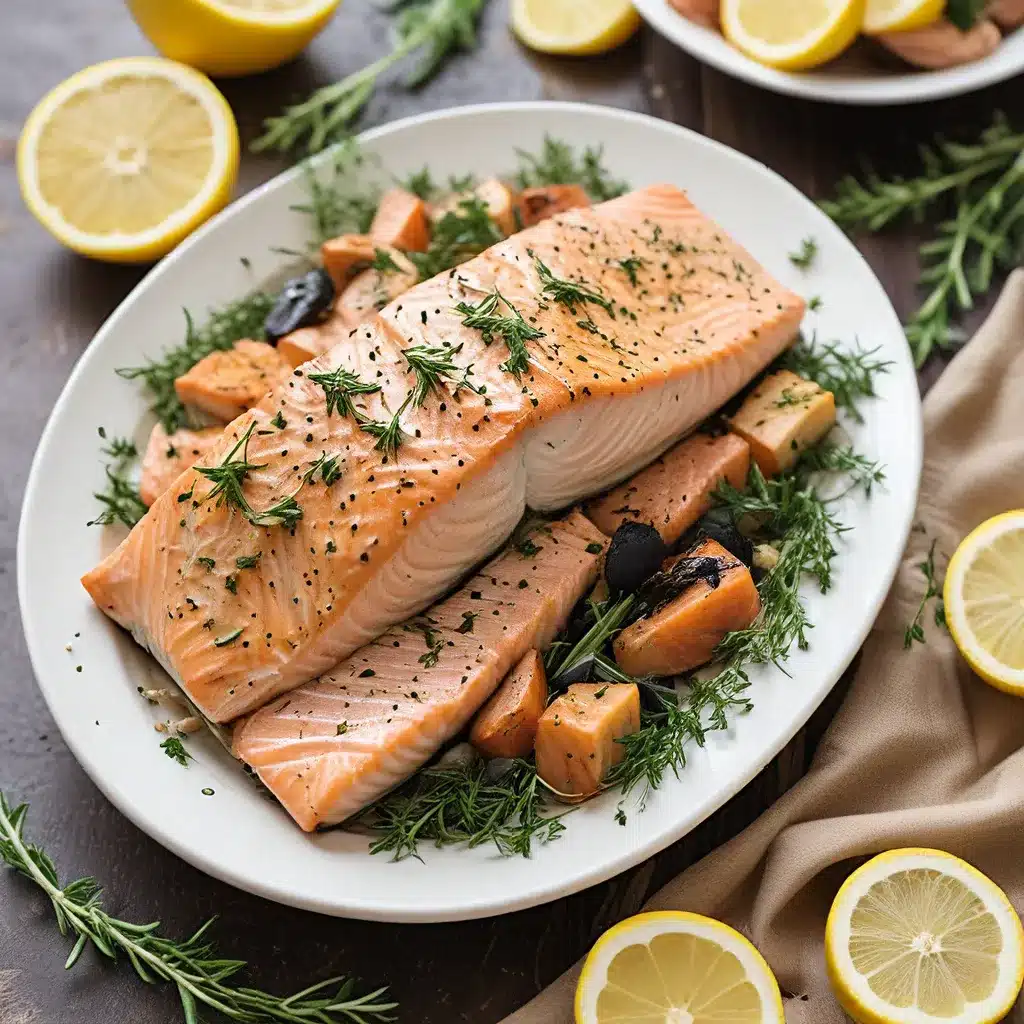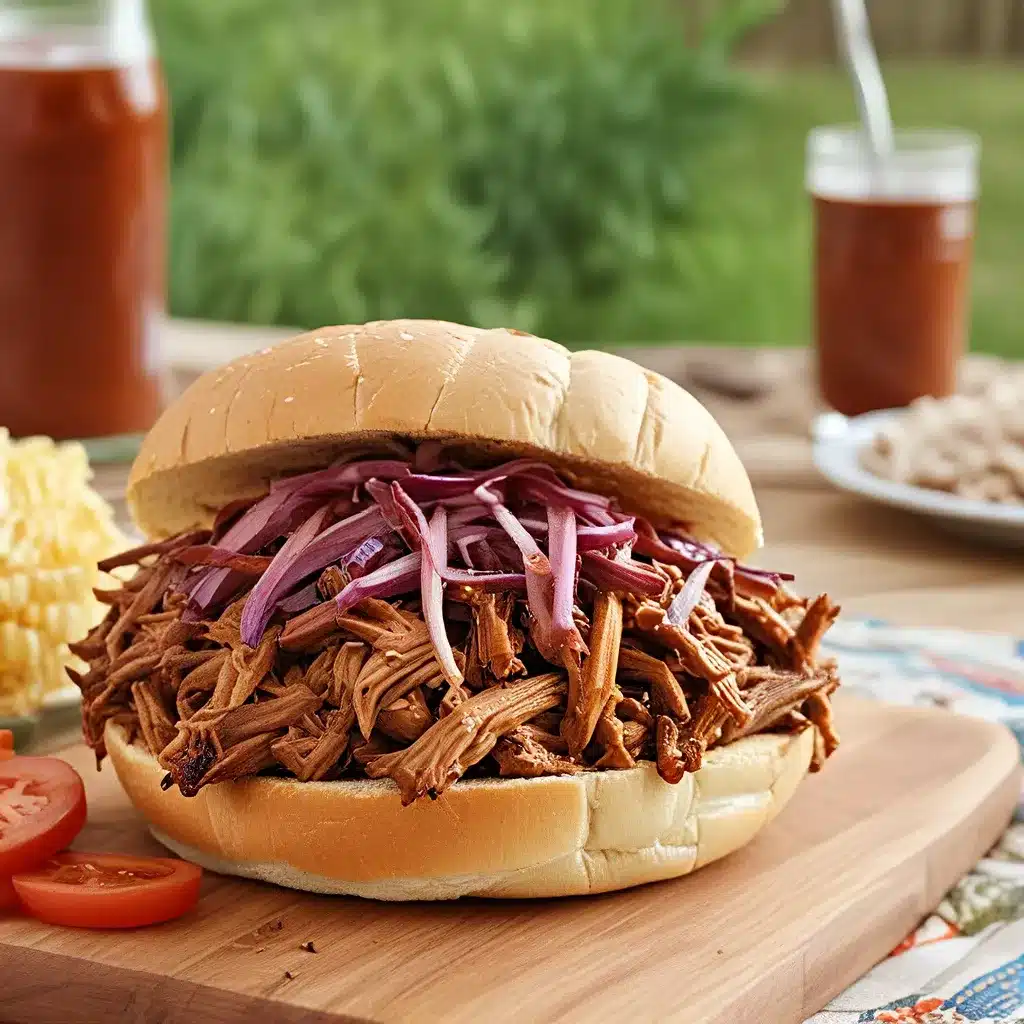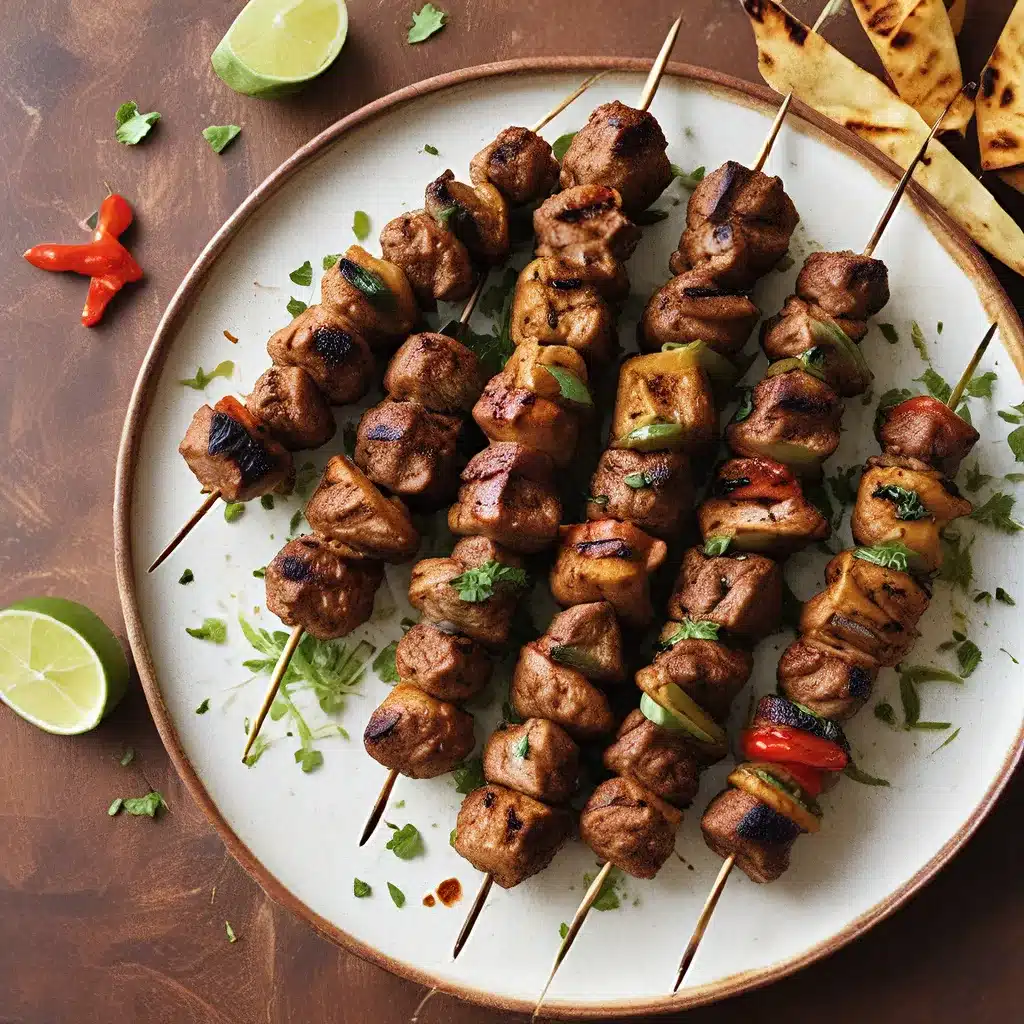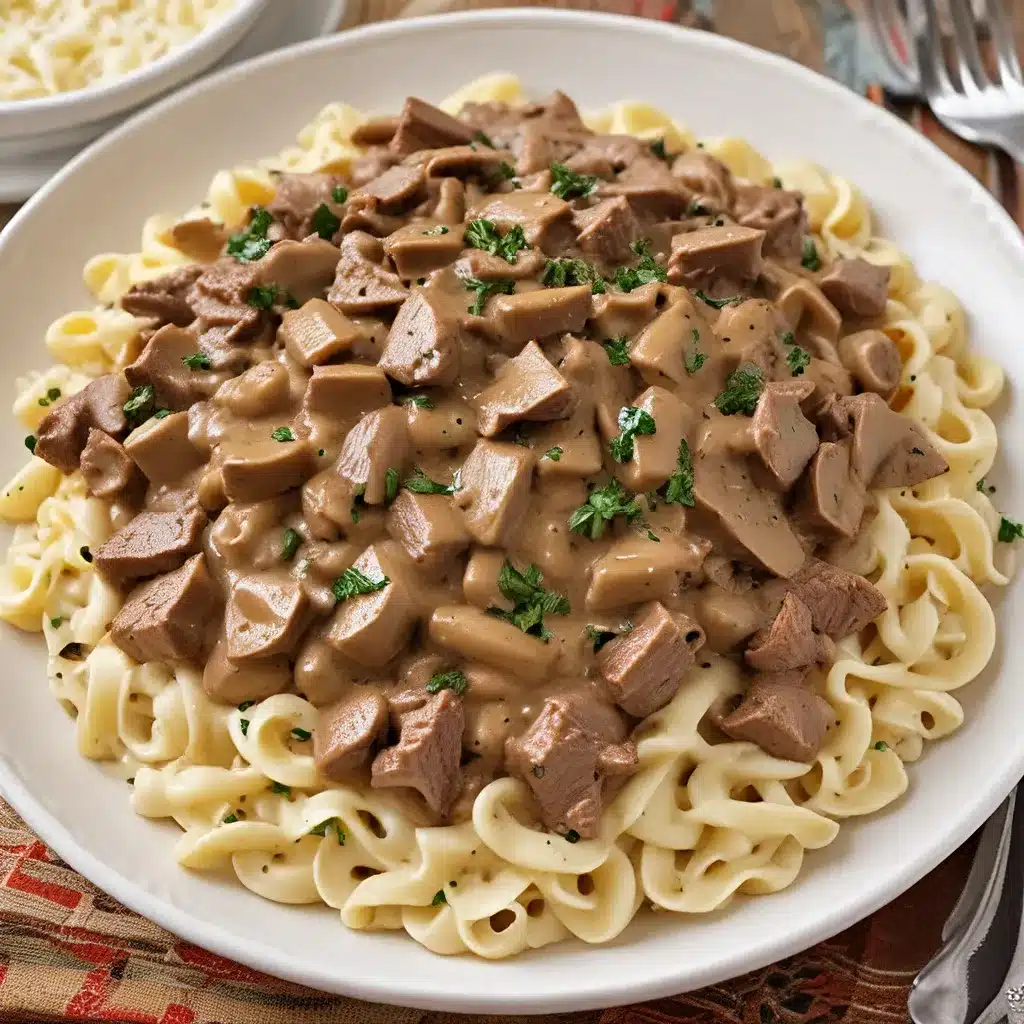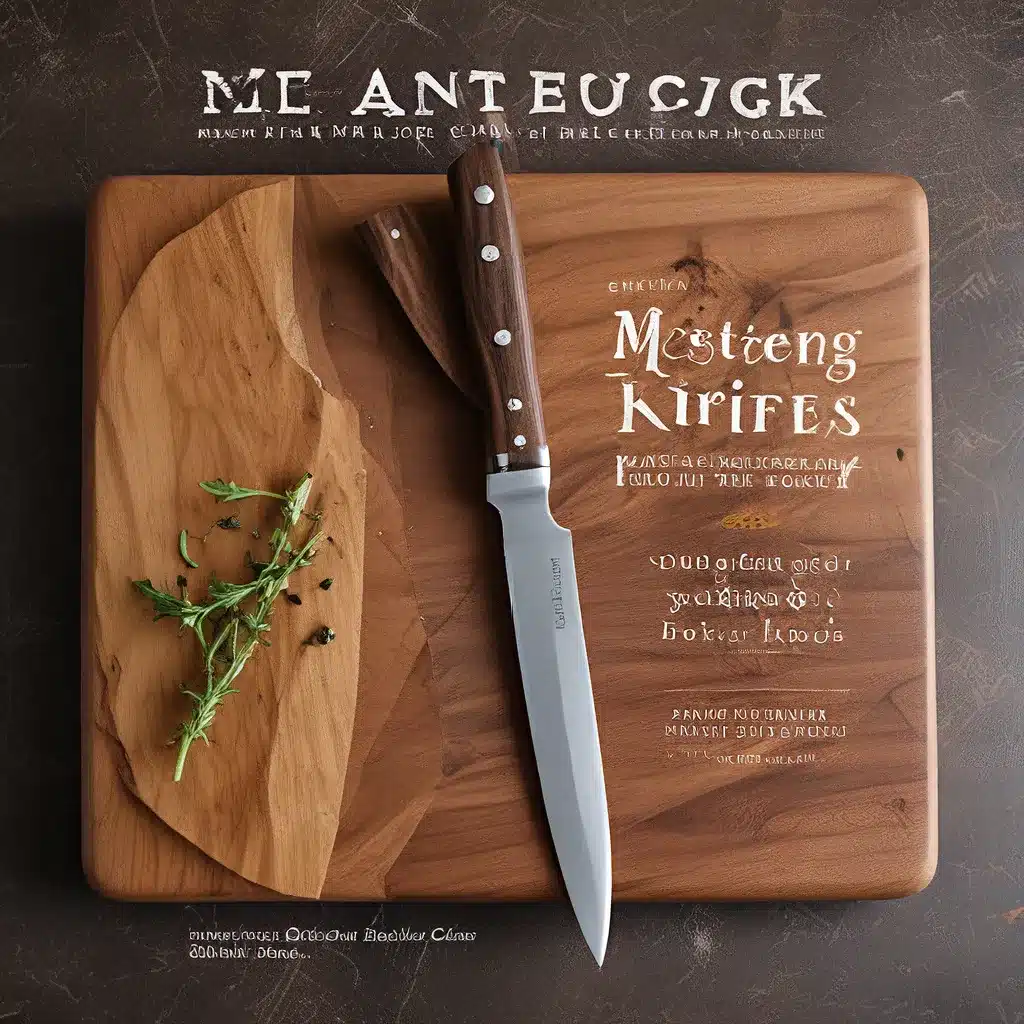
As a home cook, the humble knife is truly the backbone of the kitchen. It’s the tool that transforms ingredients from their raw state into culinary masterpieces. But let’s be honest, mastering the art of knife skills can feel like a daunting task – one that’s often reserved for the pros.
Well, my friends, it’s time to break free from that misconception. I’m here to let you in on a little secret: knife skills aren’t just for the culinary elite. With a bit of practice and the right guidance, home chefs like you and me can unlock the secrets to precision cutting and razor-sharp blades.
In this comprehensive guide, I’ll take you on a journey through the essential knife skills every home cook should have in their arsenal. From the proper grip and slicing techniques to sharpening and maintenance, you’ll be wielding that blade with confidence in no time.
So, let’s dive in and elevate your home cooking game with Cutting Edge: Mastering Essential Knife Skills for Home Chefs.
Mastering the Fundamentals: Knife Grip and Cutting Techniques
Before we even think about dicing, mincing, or julienning, we need to nail down the basics. And the foundation of all great knife skills? The proper grip.
Now, I know what you’re thinking – “I’ve been holding a knife my whole life, how hard can it be?” But trust me, there’s a reason why professional chefs have a specific way of gripping their blades. It’s all about efficiency, control, and safety.
The chef’s grip is the way to go. Choke up on the handle with your palm, while your thumb and index finger grip the top of the blade. This position allows you to use the full weight and sharpness of the knife, making for effortless cutting. Plus, it keeps your fingers safely out of harm’s way.
Once you’ve got the grip down, it’s time to focus on those cutting techniques. The key is to use a rocking motion, gently pushing the knife forward and back. This not only creates smooth, even slices but also minimizes the risk of slipping or cutting yourself.
And let’s not forget about the helping hand. The hand that’s not holding the knife plays a crucial role in stabilizing the ingredient and keeping your fingers out of the blade’s path. The “bear claw” grip – with your fingertips curled under – is the way to go.
With these fundamentals mastered, you’ll be chopping, dicing, and mincing like a pro in no time. But don’t worry, I’ll dive deeper into those specific cutting techniques in a bit. For now, let’s talk about the most important tool in your kitchen: the knife itself.
Selecting the Right Knives for Your Kitchen
When it comes to knives, it’s not a one-size-fits-all situation. The right knife for the job can make all the difference in your cooking experience. And trust me, I’ve had my fair share of kitchen mishaps with the wrong blade.
But fear not, I’m here to guide you through the essential knives every home cook should have in their arsenal.
The Workhorse: The Chef’s Knife
The chef’s knife is, without a doubt, the workhorse of the kitchen. With its broad, tapering blade and sharp tip, it’s the knife you’ll reach for time and time again. Whether you’re slicing, dicing, or mincing, this versatile tool can handle it all.
For most home cooks, an 8-inch chef’s knife is the sweet spot. But if you’re feeling adventurous, a 10-inch model can offer even more efficiency and power. Just be sure to look for a comfortable handle and a blade that’s thicker at the base than the tip.
The Versatile Sidekick: The Utility Knife
Next up, the utility knife is your trusty sidekick. These small, nimble blades (typically 3-4 inches long) are perfect for handling soft ingredients like shallots, mushrooms, and peaches. Plus, they’re a breeze to control, making them a great option for home cooks.
When it comes to utility knives, inexpensive thin-bladed versions with plastic handles are often the most practical choice. After all, these small knives can be tricky to sharpen, so it’s best to simply replace them when they start to dull.
The Serrated Superstar: The Bread Knife
Last but not least, the serrated knife is the unsung hero of the kitchen. Sure, it’s great for slicing bread, but that’s just the tip of the iceberg. These scalloped blades are also perfect for sawing through ingredients with firm rinds, like butternut squash, lemons, and pineapples.
When it comes to serrated knives, a 10-inch blade is the standard. And the serrated edge isn’t just for bread – it can also create neat slices of soft-skinned ingredients like tomatoes and eggplants.
Now, I know what you’re thinking – “But what about all those other specialty knives I see in cooking shows?” Well, the truth is, for most home cooks, these three knives are all you really need. The chef’s knife, utility knife, and serrated knife can handle just about any task in the kitchen.
Of course, if you’re feeling adventurous, you can always add a boning knife, a carving knife, or a Santoku knife to your collection. But trust me, mastering these three essential blades will take your home cooking to new heights.
Keeping Your Knives Sharp and Ready
Alright, now that you’ve got the right knives in your kitchen, it’s time to talk about the most crucial aspect of knife skills: sharpening and maintenance.
Let’s be honest, most home cooks don’t give their knives the attention they deserve. We’re all guilty of it – letting those blades dull and slide until they’re more like butter knives than the precision instruments they’re meant to be.
But here’s the thing: keeping your knives sharp doesn’t just make cutting easier, it also keeps you safer. Dull knives are more likely to slip and slide, increasing the risk of nasty cuts. Sharp blades, on the other hand, glide through ingredients with ease, reducing the chances of mishaps.
So, how do you keep your knives in tip-top shape? It all starts with mastering the art of sharpening.
Sharpening 101: Manual Sharpeners are the Way to Go
When it comes to sharpening, manual sharpeners are the way to go. Sure, electric models might seem tempting, but they can be a bit too aggressive for the average home cook. With a manual sharpener, you’re in control – able to maintain the proper angle and apply just the right amount of pressure.
The key is to use gentle strokes and test the blade often. Gradually work your way up the sharpening stones, starting with a coarser grit and finishing with a fine one. This ensures you don’t end up with a blade that’s more jagged than sharp.
And don’t forget about honing – the often-overlooked step that keeps your knives in peak condition. Honing, which uses a sharpening steel to straighten the blade’s edge, should be done regularly (like, once a week) to maintain that razor-sharp edge.
Proper Storage and Cutting Surfaces: Protecting Your Blades
But sharpening is only half the battle. Proper storage and cutting surfaces are just as important when it comes to keeping your knives in top shape.
Avoid stashing your blades in a drawer – that’s a recipe for nicks and dings. Instead, invest in a knife block or magnetic strip. These not only keep your knives organized but also protect the edges from unnecessary wear and tear.
And when it comes to cutting boards, wood or thick plastic are your best bets. Glass and ceramic surfaces are way too hard and will dull your knives in no time. Plus, make sure to secure your cutting board with a damp towel underneath to prevent it from sliding around.
With a little extra care and attention, you can keep your knives sharp and ready for action. And trust me, the payoff is well worth it. Precision cutting, effortless slicing, and the confidence that comes with wielding a razor-sharp blade – it’s a game-changer in the kitchen.
Mastering the Art of Cutting: Essential Techniques for Home Chefs
Alright, now that we’ve got the fundamentals down – the grip, the cutting motion, and the care and feeding of your knives – it’s time to dive into the nitty-gritty of essential cutting techniques.
Whether you’re tackling a pile of crisp vegetables or dicing up some succulent fruit, mastering these skills will take your home cooking to new heights.
Chopping: The Backbone of Home Cooking
Let’s start with the workhorse of all cutting techniques: chopping. This simple yet essential skill is the backbone of home cooking, transforming ingredients into perfectly uniform pieces.
To chop a garlic clove, start by smashing it with the flat side of your chef’s knife. This loosens the skin, making it a breeze to peel. Then, hold the peeled clove firmly on the cutting board and use a rocking motion to chop it into fine pieces.
For leafy herbs like parsley, grip the bunch in your palm and use your chef’s knife to make a series of angled cuts. Repeat the process, turning the pile 90 degrees each time, until you’ve achieved your desired level of chop.
And when it comes to chopping carrots or other vegetables, start by cutting them into uniform pieces, then stack and chop them again. This ensures every bite is the same size and cooks evenly.
Dicing: Transforming Ingredients into Cubes
Next up, dicing – the process of turning those irregular, lumpy ingredients into neat, uniform cubes. Whether you’re tackling a potato or a baby carrot, the key is to reduce the curves and bumps into clean, cubic shapes.
For onions, start by cutting the onion in half, then make a series of horizontal and vertical slices. The “bear claw” grip on your helping hand is essential here, protecting your knuckles as you work.
Dicing tomatoes is a bit more delicate, but the process is the same. Cut the tomato into quarters, remove the seeds, and then slice and dice the flesh. The result? Perfect cubes, every time.
And when it comes to potatoes, the trick is to first trim the rounded edges to create a rectangular shape. Then, it’s just a matter of slicing and dicing your way to perfectly uniform potato cubes.
Slicing and Wedging: Mastering Larger Cuts
But chopping and dicing aren’t the only tricks up your sleeve. Slicing and wedging are essential techniques for handling larger, more substantial ingredients.
For slicing tomatoes or lemons, a serrated knife is your best friend. Use a gentle back-and-forth motion to create clean, even slices. And when the tomato or lemon gets too small to grip, simply flip it over and slice it horizontally.
Wedge cuts, on the other hand, are perfect for filling pies and cobblers with beautiful fruit. To slice an apple into wedges, start by cutting it in half through the core, then slice each half vertically. Voila – perfect wedges, every time.
Julienning and Chiffonade: Elegant Garnishes and Salad Prep
Finally, let’s talk about julienning and chiffonade – the techniques that transform your ingredients into elegant, restaurant-worthy garnishes and salad additions.
Julienning is all about creating long, thin strips – perfect for stir-fries, salads, and more. Simply slice your ingredient into 2-inch pieces, then slice those pieces lengthwise into thin strips.
And for a chiffonade of basil or other leafy greens, stack the leaves, roll them up tightly, and then slice across the roll to create fine, ribbon-like strands.
These delicate cutting techniques might take a bit of practice, but the results are well worth it. Imagine the delight on your dinner guests’ faces when you present them with a beautifully garnished plate or a salad that looks like it was prepared by a professional.
Putting It All Together: A Home Cook’s Journey to Knife Mastery
So, there you have it – the essential knife skills every home cook should have in their arsenal. From the fundamentals of grip and cutting technique to the art of sharpening and maintaining your blades, you’re now armed with the knowledge to tackle any kitchen task with confidence.
But you know what they say – practice makes perfect. So, don’t be afraid to get in the kitchen and start honing your skills. Chop, slice, and dice your way through a variety of ingredients, experimenting with different techniques and seeing what works best for you.
And remember, the journey to knife mastery is an ongoing process. There’s always more to learn, new skills to discover, and ways to refine your technique. So, embrace the challenge, have fun with it, and let your inner chef shine.
Who knows, you might just surprise yourself with the level of precision and control you can achieve with a simple chef’s knife. And the best part? You’ll be whipping up restaurant-quality meals right in your own kitchen.
So, what are you waiting for? Grab your knives, and let’s get cooking!

